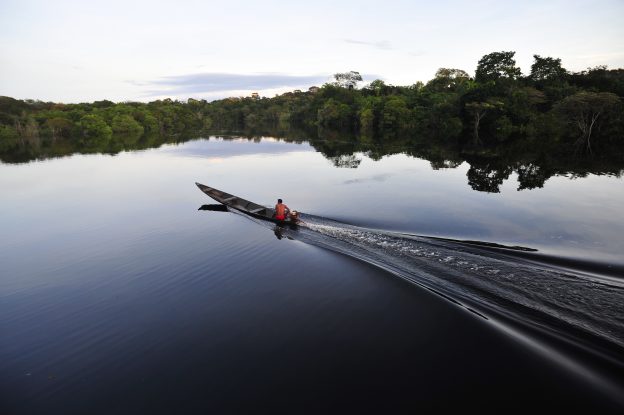As global leaders gear up for this year’s UN climate conference (COP30), one provision of the Paris Agreement is drawing controversy. Known as Article 6.4, it focuses on establishing a new international carbon market – the Paris Agreement Crediting Mechanism (PACM).
PACM succeeds the UN-led carbon credit scheme of the Kyoto Protocol era, the Clean Development Mechanism (CDM), which became notorious for its poor and limited climate impact. Many of its credits lacked additionality — they rewarded climate-positive actions that would likely have occurred without the scheme’s support. As confidence eroded, the price of credits collapsed in 2012.
Given that track record, the Article 6.4 Supervisory Body is determined to ensure high integrity credits this time around. Issues like permanence (how long a climate solution keeps CO2 out of the atmosphere), leakage (whether an intervention reduces emissions or simply dispalces them) and the definition of CO2 removals are now all “hot discussions” as the body debates the details of the scheme, according to Christopher Martius, senior advisor to the climate change, energy and low-carbon development team at the Center for International Forestry Research and World Agroforestry (CIFOR-ICRAF).
The caution, however, may be driving some policymakers to consider excluding critical carbon sinks — namely, forests, trees, soil and other natural climate solutions (NCS) — even though the Intergovernmental Panel on Climate Change (IPCC) estimates they account for about 28 percent of the world’s high-confidence, cost-effective global climate change mitigation alternatives.
Why? Because carbon stored in forests can last for decades or even centuries, but it’s not considered strictly permanent — it can be released back into the atmosphere through natural disturbances such as fires and storms, or through human activities like harvesting wood for fuel or timber.
Morning light rises over tropical forests in Papua New Guinea, revealing the richness and resilience of natural landscapes that help regulate the global climate.
Video by CIFOR-ICRAF
To that point, a group of 80 scientists, civil society and private-sector actors have sent a petition to the Supervisory Body titled Do Not Rule Out Nature from Climate Action: the Scientific Imperative for Incentivizing Natural Climate Solutions on the Path to Net Zero.
In the document, they warn that “some recent proposals for climate action policy downplay NCS investments by assuming, incorrectly, that NCS cannot be managed to provide durability.” Instead, they argue, temporary removals of CO2, such as those provided through actions like planting trees, can deliver immediate and easily scalable climate benefits, thus “reducing peak warming and buying crucial time for longer-duration solutions [such as geologic carbon storage] to scale.”
Still, not all NCS projects deliver the same likelihood of lasting impact. Within forestry, for instance, permanence depends on a number of factors, such as forest type, policy and institutional arrangements, management practices and land tenure issues. As such, “leaving the ‘one size fits all’ approach behind, and excluding some Nature-based Solutions (NbS) on the basis of higher risks of non-permanence might be a good pathway,” said Martius.
CIFOR-ICRAF’s Director of Science, Robert Nasi, advocated similarly for a nuanced approach: ‚ÄúEither the [PACM] guidelines drive [NCS] out of any compliance market because of unrealistic expectations, or these are tailored properly, taking into account the nature of living systems. The opposite risk is overly lax guidelines and a lot of hot air,‚Äù he said. ‚ÄúIt seems that so far the [supervisory] body is leaning toward the first case [driving NCS out entirely], and this is going to be an issue because it will discourage the use of NCS, which we do need.‚Äù
In addition to their carbon value, NCS offer vital co-benefits for ecosystems and communities – improving water quality, protecting biodiversity and supporting livelihoods. Beria Leimona, CIFOR-ICRAF’s theme leader for climate change, energy and low-carbon development, urged policymakers to look “beyond carbon.”
She warned that progress on sustainable development will be hindered if we focus overly on technical methodologies without paying attention to the essential purpose of climate change solutions: human wellbeing. Carbon markets are one way to channel funds towards these goals, ‚Äúbut I would say that they are only tools,‚Äù said Leimona. ‚ÄúThe heart of it is how we can restore forests and related functions ‚Äî like watershed health ‚Äî that really need to be maintained for the ultimate goal of increasing humanity’s resilience.‚Äù


Equally important, NCS initiatives must align with and be supportive of local needs and realities — particularly given that the Global North countries have caused most historical emissions, while the Global South hosts the majority of NCS opportunities. “Locally based solutions must be developed in accordance with priorities of local populations and their development aspirations (and not dumped on them from outside), with specific rules of agreement and engagement,” said Vincent Gitz, CIFOR-ICRAF’s director for Latin America.
“In the governance of these solutions, there must be a balance of decision-making power between actors external to a landscape (those investing in the solutions) and those living in the landscape (making these solutions a reality and a part of their new ways to steward and manage land).”
Yet even as experts advocate for inclusion, Daniel Murdiyarso, CIFOR-ICRAF principal scientist, cautioned against viewing nature as a silver bullet and that we shouldn’t overstate its potential to “fix” the situation in which we find ourselves.
“Nature is not and will never be the solution to the [climate] calamity, which is mainly (80-90%) caused by the burning of fossil fuels,” he said. “Nature is the victim rather than the solution. So, the intention to make nature part of the solution should be seen as ‘piggybacking’ rather than the main agenda. The opportunity should not be missed — but it should certainly be implemented with high environmental integrity.”
Follow CIFOR-ICRAF on Instagram as we bring you stories, insights and science straight from COP30 in Belém.










